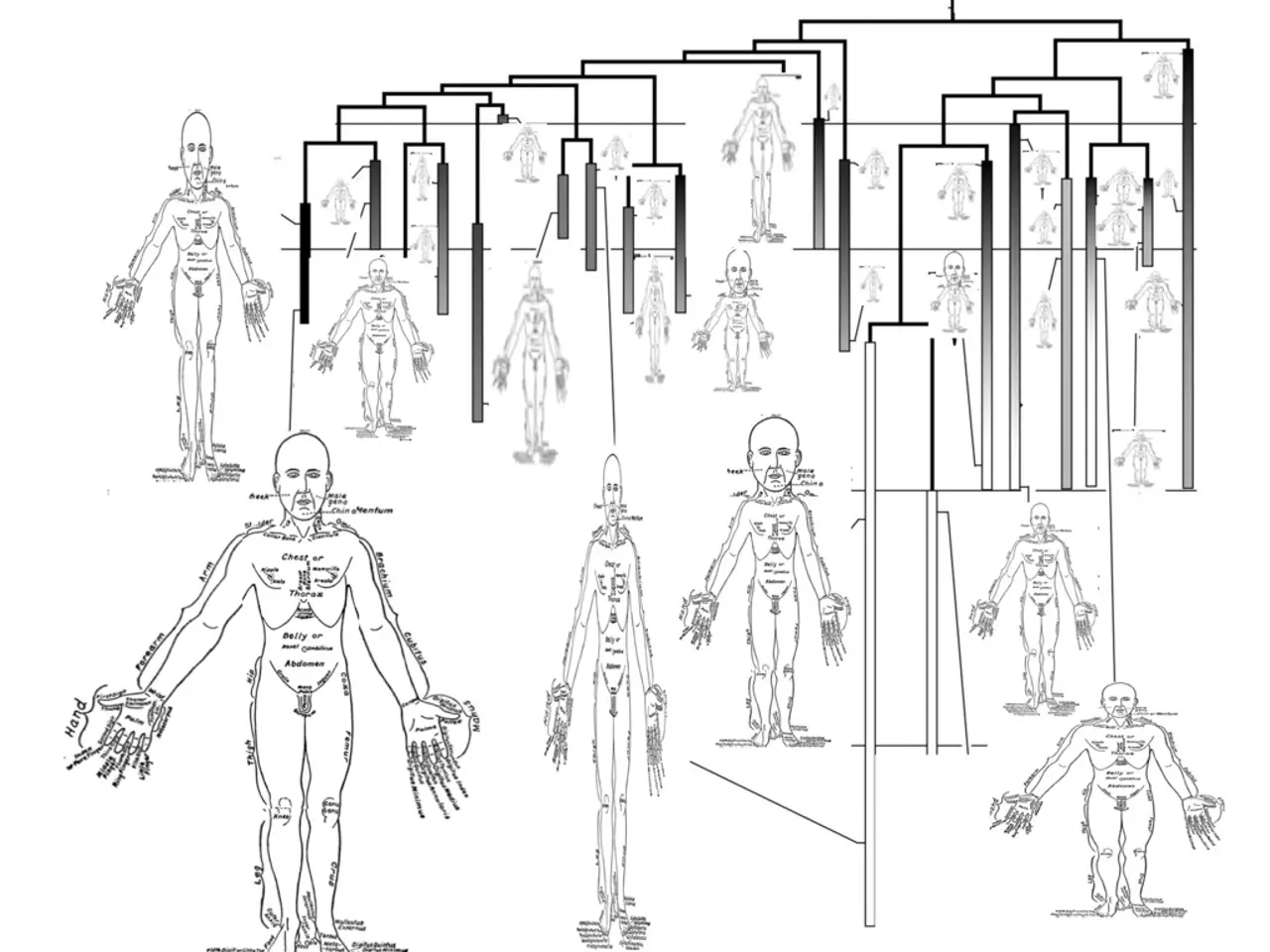Gastrointestinal Process: Structure, Function, and Molecular Components
The human digestive system, also known as the gastrointestinal tract or alimentary canal, is a complex network of organs that plays a crucial role in breaking down food and extracting essential nutrients. This system, approximately 30 feet long in adults, is divided into two main sections: the small intestine and the large intestine (or colon).
The digestive process begins in the mouth, where teeth break down food into smaller pieces through chewing, and the tongue helps mix it with saliva. Saliva contains enzymes like amylase that start breaking down carbohydrates, and it also moistens the food to facilitate swallowing and protect teeth from bacteria.
After swallowing, food passes through the pharynx, a muscular tube, and into the esophagus, where it is moved towards the stomach via muscular contractions called peristalsis. In the stomach, food is mixed with gastric juices containing acid and enzymes, which further break down proteins and kill microbes, turning the food into a semi-liquid substance called chyme.
The chyme then moves into the small intestine, where most of the chemical digestion and absorption occur. Enzymes from the pancreas and bile from the liver aid in digesting fats, proteins, and carbohydrates, allowing nutrients to be absorbed into the bloodstream. Approximately 90% of the nutrients from food are absorbed in the small intestine.
Undigested food then enters the large intestine, which is approximately 5 feet long. Here, water and some electrolytes are absorbed, and waste products are prepared for elimination. The large intestine also houses gut bacteria that help ferment some fibers, producing beneficial compounds.
Finally, waste material is stored in the rectum until eliminated through the anus as feces. It's essential to note that overall, this entire digestion process—from swallowing to elimination—can take between 36 to 48 hours on average, varying between individuals.
Maintaining a healthy digestive system is crucial for optimal functioning. Tips for maintaining healthy digestion include chewing food thoroughly, eating a fiber-rich diet, staying well hydrated, managing stress, and avoiding swallowing excessive air. By incorporating these habits, individuals can support a healthy gut and ensure efficient digestion.
References: [1] National Library of Medicine. (2021). Digestive system. Retrieved from
- The digestive system, a complex network of organs that includes the small intestine and the large intestine (or colon), is vital for extracting nutrients from food.
- Science indicates that saliva, which contains enzymes like amylase, starts breaking down carbohydrates during the chewing process, a key step in foodandfoodbenefits.
- In the medical-conditions of poor digestive-health, a colonoscopy may be necessary to examine the digestive system for potential issues related to health.
- Eating a healthy diet, rich in fiber, can help promote a healthy gut, an essential component of health-and-wellness.
- Fitness-and-exercise, along with proper nutrition, contribute to overall well-being and aiding in the efficient digestive process.
- Regularly chewing food thoroughly, staying hydrated, managing stress, and avoiding swallowing excessive air are practices that support a healthy digestive system.




